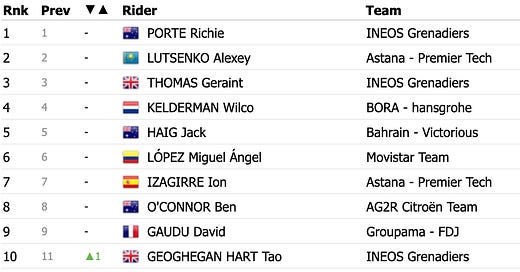The Dauphine Displayed Ineos' Leadership Issues & Launched a Potential New Star
The one-week French race lacked the usual lineup of Tour favorites but still showed us plenty about the upcoming grand tour
Richie Porte exorcised old Dauphine demons by winning the Criterium du Dauphine on Sunday’s stage 8 over Astana’s Alexey Lutsenko and his Ineos teammate Geraint Thomas. Porte, who was leading the race heading into the final stage, avoided a similar final stage meltdown that saw him lose the leader’s jersey on the final stage back in 2017, mainly due to …
Keep reading with a 7-day free trial
Subscribe to Beyond the Peloton to keep reading this post and get 7 days of free access to the full post archives.



